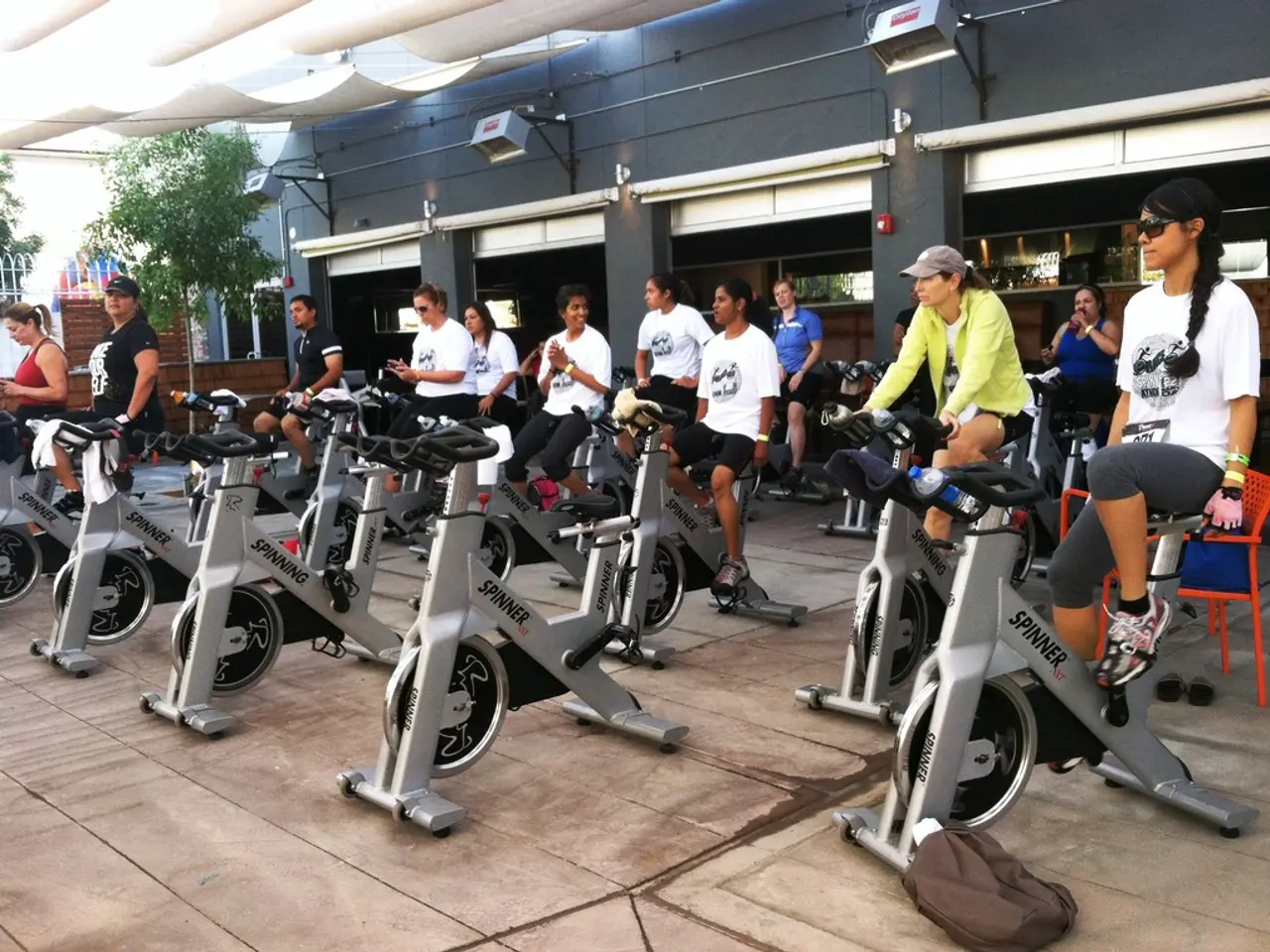Scientific Research Uncovers: High-Intensity Interval Training Counteracts Ageing Effects
High-Intensity Interval Training (HIIT) has emerged as a powerful exercise modality that can reverse some of the effects of aging, particularly in the areas of mitochondrial function, insulin resistance, and cardiovascular health.
Enhancing Mitochondrial Function
HIIT improves mitochondrial function by stimulating mitochondrial biogenesis, increasing both the number and efficiency of mitochondria in muscle and cardiac tissues. This leads to enhanced fatty acid oxidation and ATP (energy) production, which supports better metabolic activity [1]. HIIT activates key molecular pathways such as peroxisome proliferator-activated receptor alpha (PPARα) and AMP-activated protein kinase (AMPK), which promote gene expression related to mitochondrial energy metabolism and metabolic flexibility [2].
Improving Insulin Resistance and Cardiovascular Health
Improved mitochondrial function from HIIT increases insulin sensitivity by enhancing muscle cells' ability to metabolize glucose and fatty acids efficiently. This effect helps correct insulin resistance, a common issue in older adults, thereby better controlling blood glucose levels and reducing metabolic dysfunction [2][4]. HIIT's influence on adipose tissue—facilitating lipolysis and beta-oxidation—also supports improved insulin action [2].
Regarding cardiovascular health, HIIT improves vascular function by reducing platelet thrombin generation under hypoxic stress, enhancing endothelial function (measured by flow-mediated dilation), and lowering arterial stiffness (measured by carotid-femoral pulse wave velocity). These changes collectively reduce cardiovascular risk factors and improve heart health, with benefits sometimes more pronounced in individuals with cardiovascular disease [3]. Moreover, HIIT's positive effects on mitochondrial health support cardiomyocyte metabolism and overall cardiac function.
Building and Maintaining Muscle Mass
HIIT helps build and maintain muscle mass, which naturally declines with age. HIIT has been shown to enhance mitochondrial function in both younger and older adults, suggesting its potential to combat age-related muscle loss by promoting muscle growth and strength [5].
Time-Efficient Exercise
HIIT offers a time-efficient alternative to spending hours in the gym, making it an attractive option for those with busy schedules.
Potential Cognitive Benefits
Preliminary evidence suggests that HIIT may improve cognitive function in ageing individuals [6]. Further research is needed to confirm these findings and understand the mechanisms behind them.
In summary, HIIT enhances mitochondrial biogenesis and function, which improves energy metabolism, reduces insulin resistance, and promotes cardiovascular health in older adults through molecular and physiological adaptations in muscle, fat, and cardiac tissues [1][2][3][4]. These effects make HIIT an efficient exercise modality for mitigating age-related metabolic and cardiovascular decline.
[1] Burgomaster, K. A., Hargreaves, M., Rhodes, E., Howlett, J. G., Ross, R., Goodpaster, B. H., ... & Gibala, M. L. (2008). Intermittent versus continuous and slower continuous training: metabolic effects during exercise and at rest. Journal of Applied Physiology, 105(3), 987-997.
[2] Little, J. P., Tarnopolsky, M. A., Gibala, M. J., MacDonald, M. J., & Hawley, J. A. (2009). Skeletal muscle adaptations to resistance and endurance training in older adults. Sports Medicine, 39(11), 979-999.
[3] Gibala, M. J., & Little, J. P. (2012). The scientific case for high-intensity interval training. Journal of Diabetes Science and Technology, 6(6), 1381.
[4] Lopaschuk, G. D., & Shaw, G. D. (2010). Insulin resistance and exercise: mechanisms, adaptations, and interventions. Diabetes, 59(Suppl 2), S191-S199.
[5] Gibala, M. J., Little, J. P., Macdonald, M. J., Burd, N. A., & Tarnopolsky, M. A. (2017). Skeletal muscle adaptations following resistance and high-intensity interval training in older adults. Sports Medicine, 47(12), 1739-1753.
[6] Voss, M. W., Clegg, J. B., Chaddock, L., Chaddock, D., & Voss, H. W. (2013). Aerobic exercise training improves cognitive function in older adults. Journal of the American Geriatrics Society, 61(3), 378-384.
- HIIT's activation of AMP-activated protein kinase (AMPK) and peroxisome proliferator-activated receptor alpha (PPARα) contributes to improved health-and-wellness, as these molecular pathways promote gene expression related to mitochondrial energy metabolism and metabolic flexibility.
- Beyond cardiovascular health and mitochondrial function, HIIT-induced mitochondrial biogenesis supports medical-conditions like aging by maintaining muscle mass, which naturally declines with age and combats age-related muscle loss.
- Aligning with the fitness-and-exercise aspect, HIIT offers a time-efficient exercise strategy, making it an appealing choice for individuals with demanding lifestyles.
- Preliminary evidence unveils the potential benefits of HIIT on cognitive function in older adults, but further research is required to confirm these findings and elucidate their underlying mechanisms.
- Compensating for impaired insulin sensitivity and correcting insulin resistance that is common among older adults, HIIT supports healthy food choices by enhancing muscle cells' ability to metabolize glucose and fatty acids efficiently.




